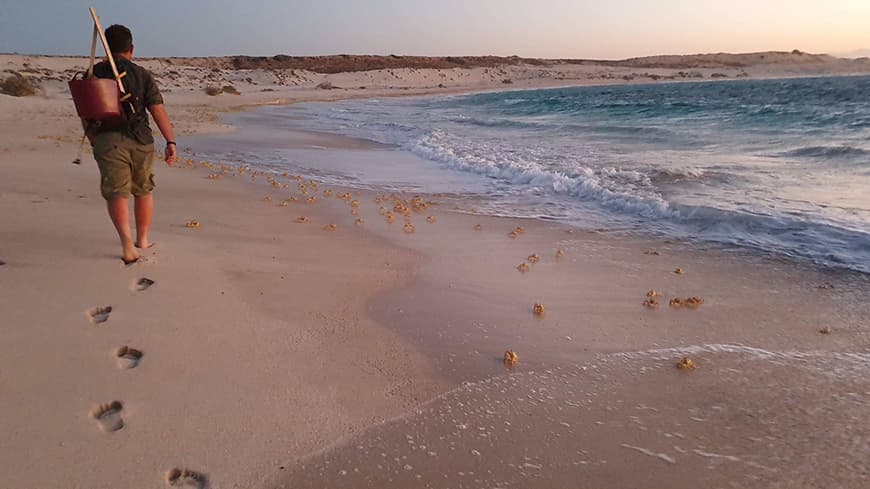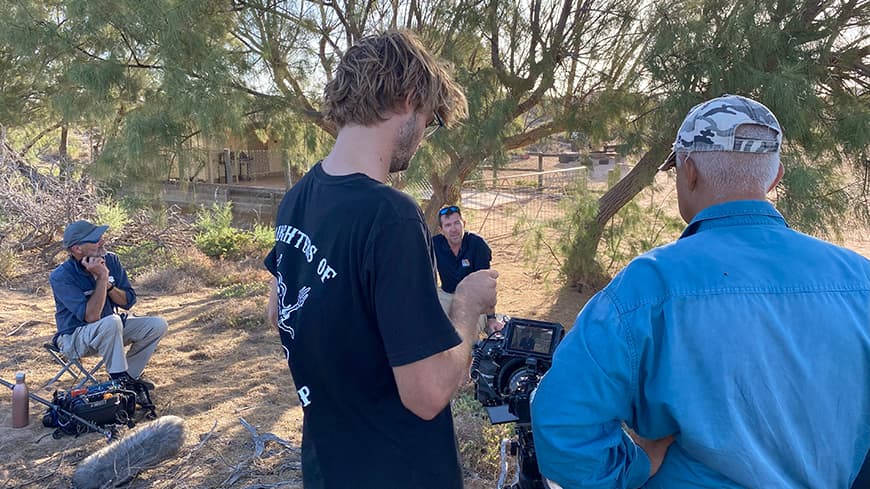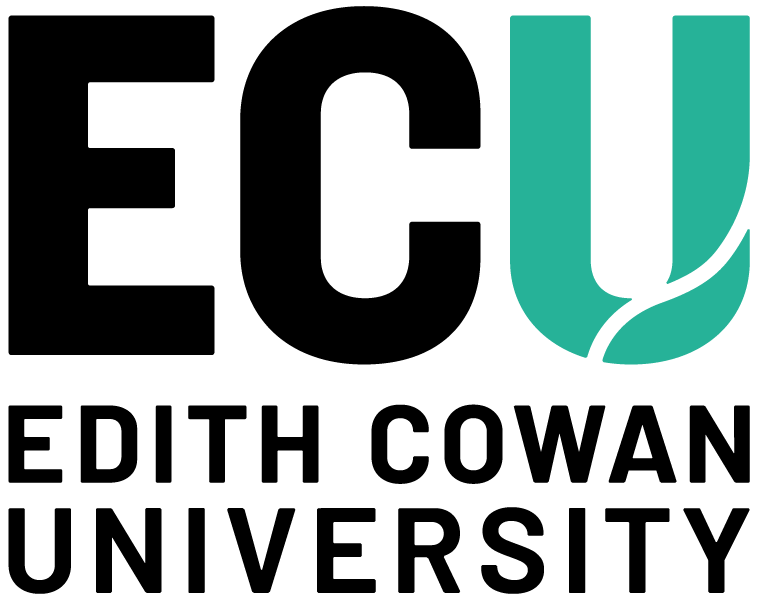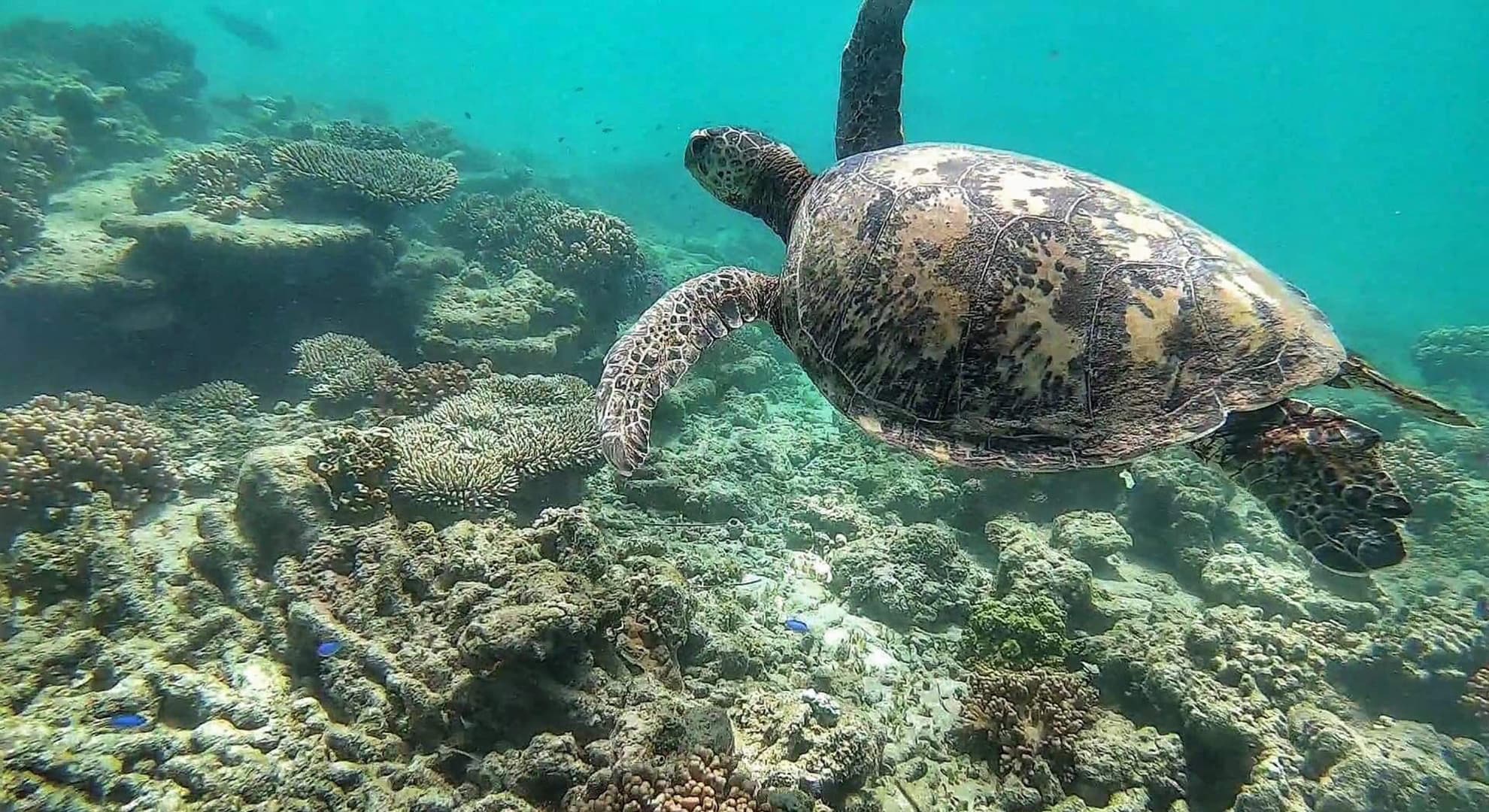Research from Edith Cowan University (ECU) marine scientist Casper Avenant has discovered many baby loggerhead sea turtles on Western Australia's coastline never make it to the ocean.
The grim findings for conservationists demonstrate egg and hatchling predation are to blame.
"Once eggs are laid and are incubating the nest, predators like ghost crabs, goannas, and dingoes and dig up nests to predate eggs, with ghost crabs being the most prolific of these burrowing predators along the Ningaloo coast. Once hatchlings emerge from the nest, they are subject to further predation by birds like silver gulls and crows, and again, ghost crabs," ECU PhD researcher Casper Avenant said.
The research project, which included thousands of hours of videography with infrared capacity, is a joint collaboration between Edith Cowan University, the Western Australia Department of Biodiversity, Conservation and Attractions (DBCA) and Woodside.
 Ghost crabs are the most prolific predators.
Ghost crabs are the most prolific predators.
The research, which has also featured in Tim Winton's three-part ABC documentary series Ningaloo Nyinggulu, has shown that, at two sites along the Ningaloo coast, more than 40% of loggerhead turtle eggs are predated, and additionally, more than 40% of emerging hatchlings, and at one location it seems that no hatchlings manage to reach the ocean.
These findings give Australian conservationists a better understanding of what levels of predation can be considered normal, and what is too high and needs to be managed – and what needs to happen next.
 The research featured in Tim Winton’s documentary series Ningaloo Nyinggulu.
The research featured in Tim Winton’s documentary series Ningaloo Nyinggulu.
Preventing extinction
Despite the bleak initial outlook, Casper Avenant's research has produced findings likely to change the trajectory for turtles and improve the management of threatened species.
ECU Professor Glenn Hyndes said the research will allow the implementation of conservation management to prevent the extinction of WA sea turtles.
"The next step is to use our data to be able to look at mitigation strategies that will reduce the predation pressure on the eggs and hatchlings of the loggerhead turtles, ways that can be adopted to be able to reduce the predation on this population."
What's next? A vital cause
DBCA senior scientist, Dr Sabrina Fossette, a key collaborator on this project, said the next step is to trial and assess a range of mitigation strategies, which would focus on reducing egg predation, and even reduce predator numbers. He would also like to assess egg and hatchling predation rates at additional sea turtle rookeries and for other turtle species that nest on Australian beaches.
"Knowing at which rookeries eggs and hatchlings are most vulnerable to predation allows us to focus management where it is most needed and can have the greatest impact. I hope that my research will help identify where we should focus resources," he said.
Sea turtles - factsheet
- There are seven species of sea turtle around the world, six are found in Western Australia
- Like all reptiles, sea turtles have a backbone, breathe air and lay eggs
- They are dependent on their environment to regulate body temperature (ectotherms)
- 90% of loggerhead turtles found in Western Australia nest in Shark Bay at Turtle Bay (Dirk Hartog Island)
- Nesting season is October to March
- Females dig nests and lay eggs in the same area they were born, and hatchlings emerge from January to May, after a ~2-month incubation period
- Sex is determined by nest temperature, with incubation temperatures over 30ºC producing mostly females
- Sea turtles have lived in the world's oceans for over 100 million years
- They are an integral part of the traditional culture of many coastal indigenous peoples throughout the world, including here in WA
Read the full journal article Extreme predation of eggs and hatchlings for loggerhead turtles in eastern Indian Ocean by lead researcher Casper Avenant PhD.

 Casper Avenant's research is giving loggerhead turtles a fighting chance.
Casper Avenant's research is giving loggerhead turtles a fighting chance.



